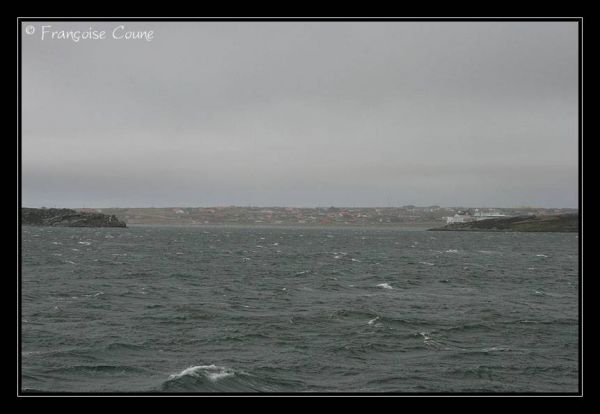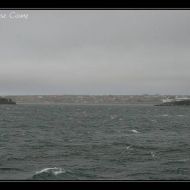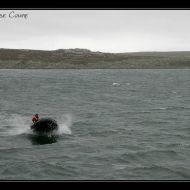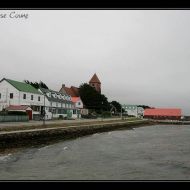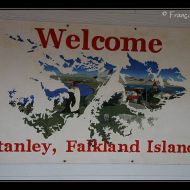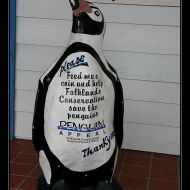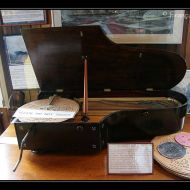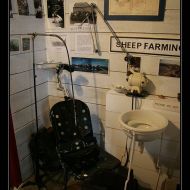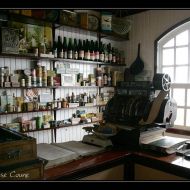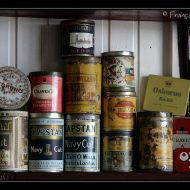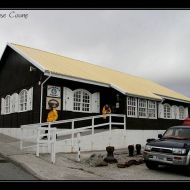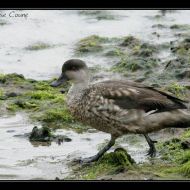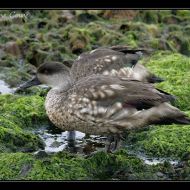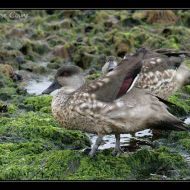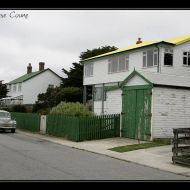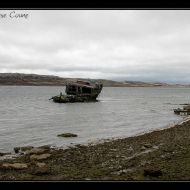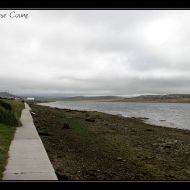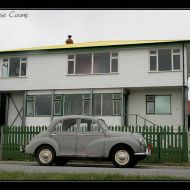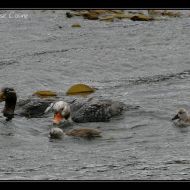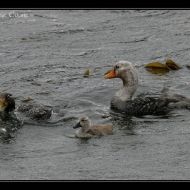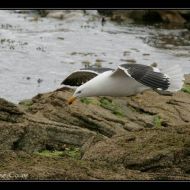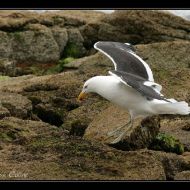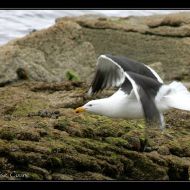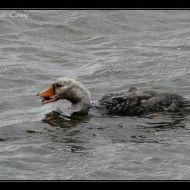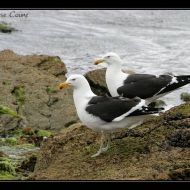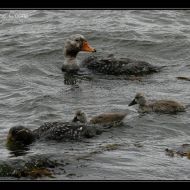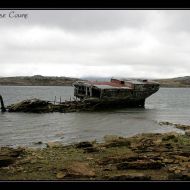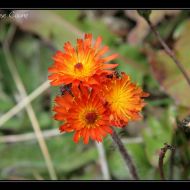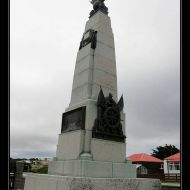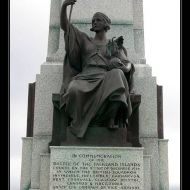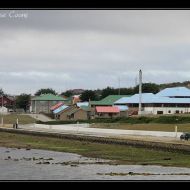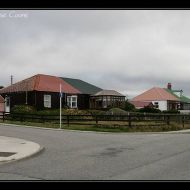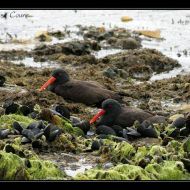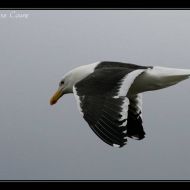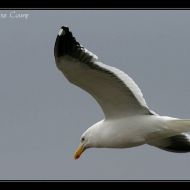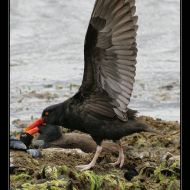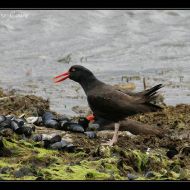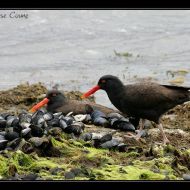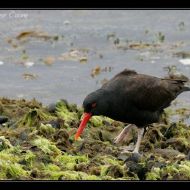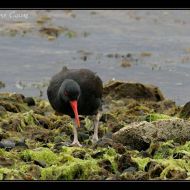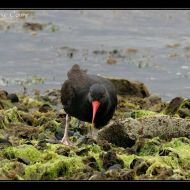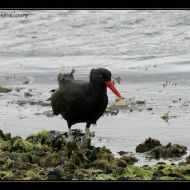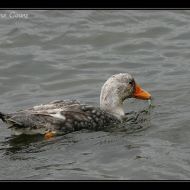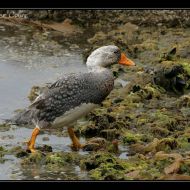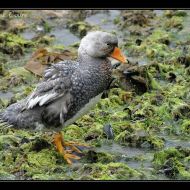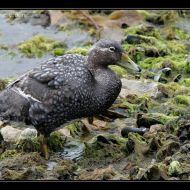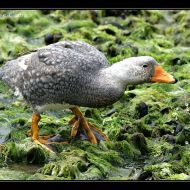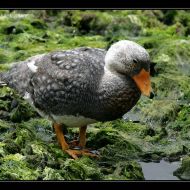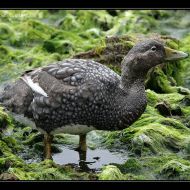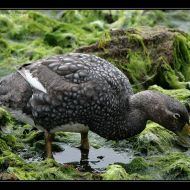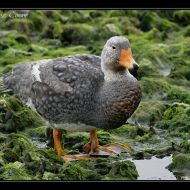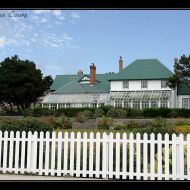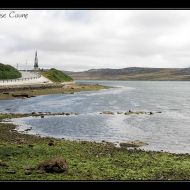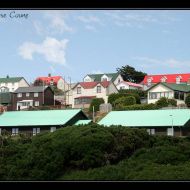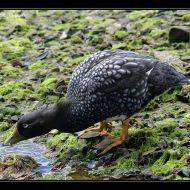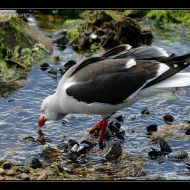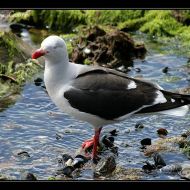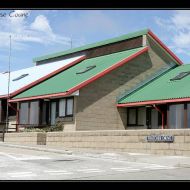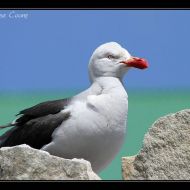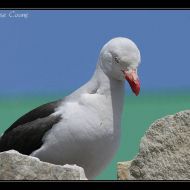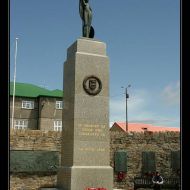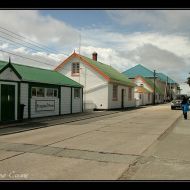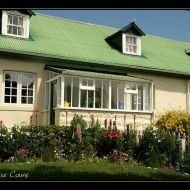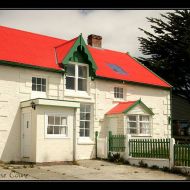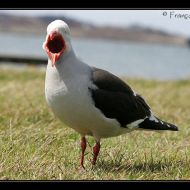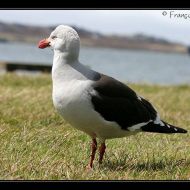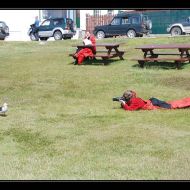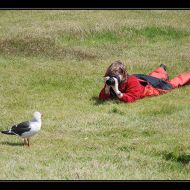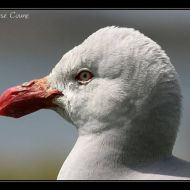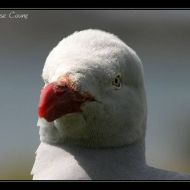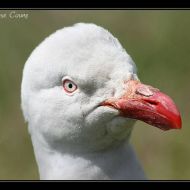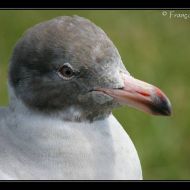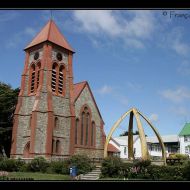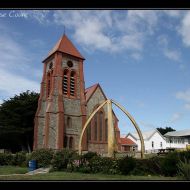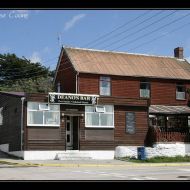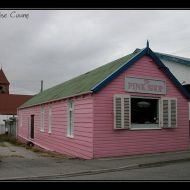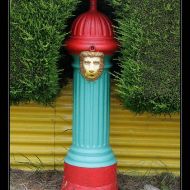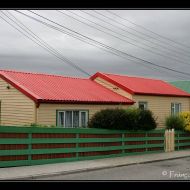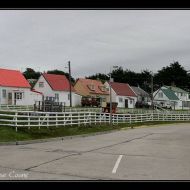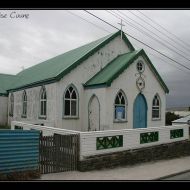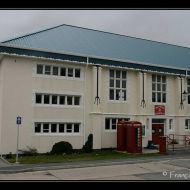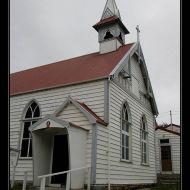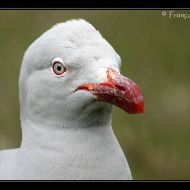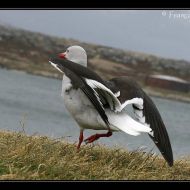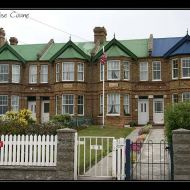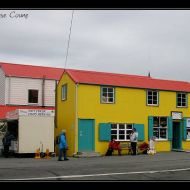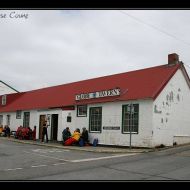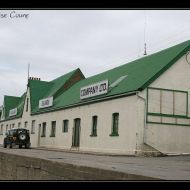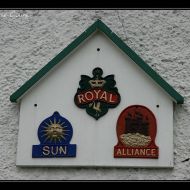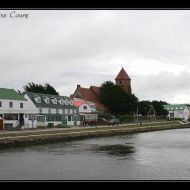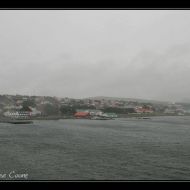Stanley was established in the early 1840’s. The site was selected on several criteria, namely its sheltered harbour easily accessible to sailing vessels, plentiful supply of freshwater from nearby Moody Brook and the abundance of peat fuel in the surrounding area. By 1846 the essential buildings had been completed and the new town had taken shape. Life in Stanley was hard, however, due to isolation and rough weather.
Stanley was used as a port of call by sealers and whalers until late in the 19th century. This was followed by a period of sheep farming which became the islands’ primary industry until the 1980’s. In 1982 Argentina occupied and invaded the islands in what is known as the Falklands War. The locals were eventually liberated by British soldiers but signs of battle are still prevalent in Stanley to this day. The Falklands’ current economy is based on income from the sale of fishing licenses which are heavily monitored.
Stanley has a population of approximately 2,050 residents. The local currency is the Falkland Island’s pound (which is on par with the Sterling). The British pound, U.S. dollar and major credit cards are accepted in most shops and places of business, however, change is normally given in local currency. Highlights of Stanley include a superb museum, the War Memorial, the Post Office, Government House with its botanical gardens and the church with its whalebone statue. There are also many restaurants and pubs where you may sample the local fare.
-
IMG 4735
IMG 4735
-
IMG 4739
IMG 4739
-
IMG 4741
IMG 4741
-
IMG 4742
IMG 4742
-
IMG 4743
IMG 4743
-
IMG 4916
IMG 4916
-
IMG 4917
IMG 4917
-
IMG 4918
IMG 4918
-
IMG 4921
IMG 4921
-
IMG 4922
IMG 4922
-
IMG 4924
IMG 4924
-
IMG 4925
IMG 4925
-
IMG 4930En : Crested Duck
Fr : Canard huppé
(Anas specularoides)
IMG 4930
-
IMG 4932En : Crested Duck
Fr : Canard huppé
(Anas specularoides)
IMG 4932
-
IMG 4935En : Rock Shag
Fr : Cormoran de Magellan
(Phalacrocorax magellanicus)
IMG 4935
-
IMG 4938En : Crested Duck
Fr : Canard huppé
(Anas specularoides)
IMG 4938
-
IMG 4939En : Crested Duck
Fr : Canard huppé
(Anas specularoides)
IMG 4939
-
IMG 4942
IMG 4942
-
IMG 4943
IMG 4943
-
IMG 4944
IMG 4944
-
IMG 4945
IMG 4945
-
IMG 4948En : Flightless steamer Duck
Fr : Brassemer cendré
(Tachyeres pteneres)
IMG 4948
-
IMG 4949En : Flightless steamer Duck
Fr : Brassemer cendré
(Tachyeres pteneres)
IMG 4949
-
IMG 4952En : Kelp Gull
Fr : Goéland dominicain
(Larus dominicanus)
IMG 4952
-
IMG 4953En : Kelp Gull
Fr : Goéland dominicain
(Larus dominicanus)
IMG 4953
-
IMG 4954En : Kelp Gull
Fr : Goéland dominicain
(Larus dominicanus)
IMG 4954
-
IMG 4959En : Flightless steamer Duck
Fr : Brassemer cendré
(Tachyeres pteneres)
IMG 4959
-
IMG 4962En : Kelp Gull
Fr : Goéland dominicain
(Larus dominicanus)
IMG 4962
-
IMG 4963En : Flightless steamer Duck
Fr : Brassemer cendré
(Tachyeres pteneres)
IMG 4963
-
IMG 4967
IMG 4967
-
IMG 4971
IMG 4971
-
IMG 4972
IMG 4972
-
IMG 4974
IMG 4974
-
IMG 4975
IMG 4975
-
IMG 4976
IMG 4976
-
IMG 4979En : Blackish Oystercatcher
Fr : Huîtrier noir
(Haematopus ater)
IMG 4979
-
IMG 4984En : Blackish Oystercatcher
Fr : Huîtrier noir
(Haematopus ater)
IMG 4984
-
IMG 4988En : Kelp Gull
Fr : Goéland dominicain
(Larus dominicanus)
IMG 4988
-
IMG 4989En : Kelp Gull
Fr : Goéland dominicain
(Larus dominicanus)
IMG 4989
-
IMG 4991En : Blackish Oystercatcher
Fr : Huîtrier noir
(Haematopus ater)
IMG 4991
-
IMG 4995En : Blackish Oystercatcher
Fr : Huîtrier noir
(Haematopus ater)
IMG 4995
-
IMG 4997En : Blackish Oystercatcher
Fr : Huîtrier noir
(Haematopus ater)
IMG 4997
-
IMG 5003En : Blackish Oystercatcher
Fr : Huîtrier noir
(Haematopus ater)
IMG 5003
-
IMG 5015En : Blackish Oystercatcher
Fr : Huîtrier noir
(Haematopus ater)
IMG 5015
-
IMG 5017En : Blackish Oystercatcher
Fr : Huîtrier noir
(Haematopus ater)
IMG 5017
-
IMG 5018En : Blackish Oystercatcher
Fr : Huîtrier noir
(Haematopus ater)
IMG 5018
-
IMG 5019En : Blackish Oystercatcher
Fr : Huîtrier noir
(Haematopus ater)
IMG 5019
-
IMG 5029En : Blackish Oystercatcher
Fr : Huîtrier noir
(Haematopus ater)
IMG 5029
-
IMG 5037En : Blackish Oystercatcher
Fr : Huîtrier noir
(Haematopus ater)
IMG 5037
-
IMG 5041En : Rock Shag
Fr : Cormoran de Magellan
(Phalacrocorax magellanicus)
IMG 5041
-
IMG 5042En : Flightless steamer Duck - male
Fr : Brassemer cendré - mâle
(Tachyeres pteneres)
IMG 5042
-
IMG 5045En : Flightless steamer Duck - male
Fr : Brassemer cendré - mâle
(Tachyeres pteneres)
IMG 5045
-
IMG 5063En : Flightless steamer Duck - male
Fr : Brassemer cendré - mâle
(Tachyeres pteneres)
IMG 5063
-
IMG 5066En : Flightless steamer Duck - male
Fr : Brassemer cendré - mâle
(Tachyeres pteneres)
IMG 5066
-
IMG 5069En : Flightless steamer Duck - female
Fr : Brassemer cendré - femelle
(Tachyeres pteneres)
IMG 5069
-
IMG 5070En : Flightless steamer Duck - male
Fr : Brassemer cendré - mâle
(Tachyeres pteneres)
IMG 5070
-
IMG 5073En : Flightless steamer Duck - male
Fr : Brassemer cendré - mâle
(Tachyeres pteneres)
IMG 5073
-
IMG 5074En : Flightless steamer Duck - female
Fr : Brassemer cendré - femelle
(Tachyeres pteneres)
IMG 5074
-
IMG 5076En : Flightless steamer Duck - female
Fr : Brassemer cendré - femelle
(Tachyeres pteneres)
IMG 5076
-
IMG 5078En : Flightless steamer Duck - male
Fr : Brassemer cendré - mâle
(Tachyeres pteneres)
IMG 5078
-
IMG 5080
IMG 5080
-
IMG 5081
IMG 5081
-
IMG 5082
IMG 5082
-
IMG 5087En : Flightless steamer Duck - female
Fr : Brassemer cendré - femelle
(Tachyeres pteneres)
IMG 5087
-
IMG 5090En : Dolphin Gull
Fr : Goéland de Scoresby
(Larus scoresbii)
IMG 5090
-
IMG 5092En : Dolphin Gull
Fr : Goéland de Scoresby
(Larus scoresbii)
IMG 5092
-
IMG 5098En : Flightless steamer Duck - female
Fr : Brassemer cendré - femelle
(Tachyeres pteneres)
IMG 5098
-
IMG 5102
IMG 5102
-
IMG 5104En : Dolphin Gull
Fr : Goéland de Scoresby
(Larus scoresbii)
IMG 5104
-
IMG 5105En : Dolphin Gull
Fr : Goéland de Scoresby
(Larus scoresbii)
IMG 5105
-
IMG 5106
IMG 5106
-
IMG 5107
IMG 5107
-
IMG 5108
IMG 5108
-
IMG 5109
IMG 5109
-
IMG 5111
IMG 5111
-
IMG 5119En : Dolphin Gull
Fr : Goéland de Scoresby
(Larus scoresbii)
IMG 5119
-
IMG 5124En : Dolphin Gull
Fr : Goéland de Scoresby
(Larus scoresbii)
IMG 5124
-
IMG 5125En : Dolphin Gull
Fr : Goéland de Scoresby
(Larus scoresbii)
IMG 5125
-
DSC 0319
DSC 0319
-
DSC 0321
DSC 0321
-
IMG 5133En : Dolphin Gull
Fr : Goéland de Scoresby
(Larus scoresbii)
IMG 5133
-
IMG 5134En : Dolphin Gull
Fr : Goéland de Scoresby
(Larus scoresbii)
IMG 5134
-
IMG 5139En : Dolphin Gull
Fr : Goéland de Scoresby
(Larus scoresbii)
IMG 5139
-
IMG 5140En : Dolphin Gull
Fr : Goéland de Scoresby
(Larus scoresbii)
IMG 5140
-
IMG 5144En : Dolphin Gull
Fr : Goéland de Scoresby
(Larus scoresbii)
IMG 5144
-
IMG 5146
IMG 5146
-
IMG 5148
IMG 5148
-
IMG 5152
IMG 5152
-
IMG 5158
IMG 5158
-
IMG 5160
IMG 5160
-
IMG 5161
IMG 5161
-
IMG 5162
IMG 5162
-
IMG 5163
IMG 5163
-
IMG 5164
IMG 5164
-
IMG 5165
IMG 5165
-
IMG 5170En : Dolphin Gull
Fr : Goéland de Scoresby
(Larus scoresbii)
IMG 5170
-
IMG 5178En : Dolphin Gull
Fr : Goéland de Scoresby
(Larus scoresbii)
IMG 5178
-
IMG 5180
IMG 5180
-
IMG 5183
IMG 5183
-
IMG 5184
IMG 5184
-
IMG 5187
IMG 5187
-
IMG 5188
IMG 5188
-
IMG 5191
IMG 5191
-
IMG 5193
IMG 5193



